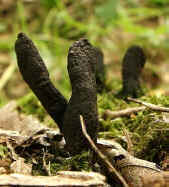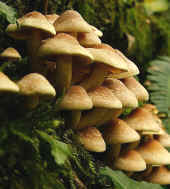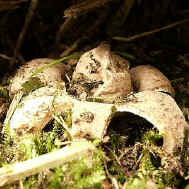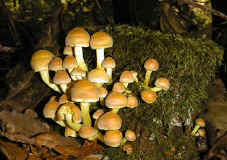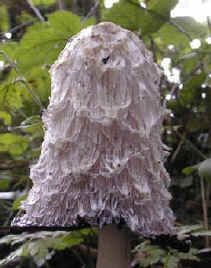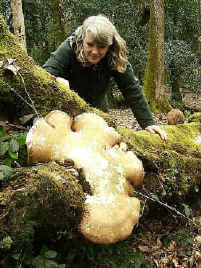The Fascinating World of Fungi
Fungi are..........
extraordinary organisms which are neither plants, nor animals.
one of the most important group of organisms on this planet
some of the world's largest and possibly oldest individuals
fairy rings, right out of children's story books
hallucinogenic magic mushrooms
some are silent killers with deadly poisons.
a vital ingredient in beer and bread.
decomposers, essential for natural recycling, helping to guarantee life on earth.
miracle cures for disease.
indispensible partners for many plants.
Some of the world's oldest living organisms? The world of fungi is a largely unseen, hidden and secretive world. It is a treasure trove of truly astonishing organisms, including some incredibly old individuals. A living fungus recently found in America, was already 400 years old at the time of Christ's birth two thousand years ago! |
What are fungi? Fungi are extraordinary organisms which are neither plants, nor animals. They are in a Kingdom all of their own. What do they look like? The main body of a fungus is usually composed of enormous numbers of fine, branching threads, called hyphae, which together form a tangled mat or web. This is the body of the fungus and it is called a mycelium. It is usually hidden from view. |
How do they reproduce? The familiar mushrooms which we may cook and eat are the fruiting bodies of the fungus. Each fruiting body (or more correctly, 'sporophore')produces millions of tiny structures called spores. The spores are so small that, depending on the type of fungus, you could fit between 500 and 1000 on the head of a pin!
|
| Each mushroom, or fruiting body, is
actually only a very small part of the fungus which produced it. Fruiting bodies are made up of dense collections of hyphae. They can be thought of as being a bit like the flowers that plants produce. |
The spores have the same purpose as the seeds which plants produce and each one is capable of growing into a new individual fungus under the right conditions. | |
Fruiting bodies occur in a staggering variety of colours, shapes and sizes! |
|
|
|
Fungi cannot make their food from sunlight, water and carbon dioxide as plants do, in the process known as photosynthesis. This is because they lack the green pigment known as chlorophyll, which plants use to capture light energy. So, like animals, they must obtain their food from other organisms. They do this in three ways. They may break down or 'rot' dead plants and animals. Organisms which obtain their food this way are known as 'saprophytes'. Alternatively they may feed directly off living plants and animals as 'parasites'. A third group is associated with the roots of plants in what are termed mycorrhizae.
|
||
| There are literally thousands of different
kinds of fungi. Worldwide, 200,000 species have been described. It is estimated that there
may actually be as many as 1 - 1.5 million species. In Britain there are more than 20,000 species of fungi. Most of these are microfungi, too small to be easily noticed. Approximately 3,000 are macro (large) fungi. Click on the 'contents' link below to access a wide range of information on these largely invisible giants. You can also access activity sheets related to fungi, or try out the Ranger's Puzzle Page, with Wordsearch, Crossword and Ranger's bad joke!. |
||
There are more species of fungi in Britain than there are native plants!
